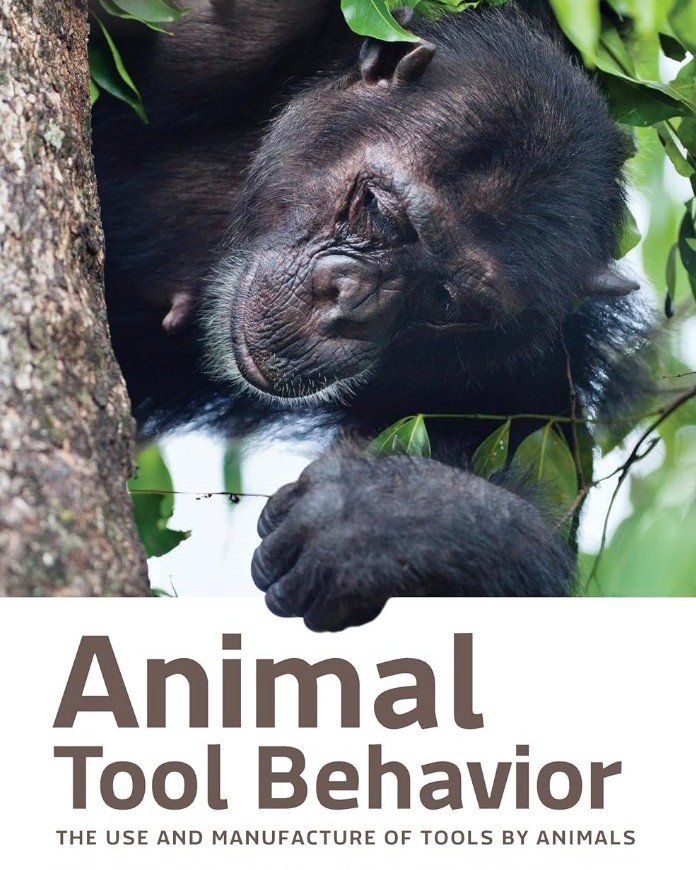- Examination of Dr. Rob Shumaker’s revised insights on animal tool use, highlighting examples across diverse species.
- Exploration of myths concerning non-human tool use and the scientific refutations presented in the book.
- Analysis of various species’ tool-using behaviors, including invertebrates, birds, fish, and mammals.
- Discussion of the collaborative efforts involved in the book, featuring contributions from Kristina R. Walkup and Benjamin B. Beck.
- The importance of understanding animal tool use for zoo management and wildlife conservation efforts.
Dr. Rob Shumaker’s updated edition of “Animal Tool Behavior” has emerged as an essential text in the study of animal intelligence and behavior. His revised insights dive deep into the fascinating world of non-human tool use, offering a refreshed perspective based on the latest research findings. Shumaker, paired with co-authors Kristina R. Walkup and Benjamin B. Beck, presents a comprehensive analysis that spans a diverse array of species. This new edition reveals the complex and often misunderstood dimensions of how animals use tools, challenging misconceptions that have persisted in the field.
One of the central achievements of Shumaker’s book is its challenge to long-standing myths about tool use among animals. For years, the general public and even some segments of the scientific community believed that tool use was a behavior exclusive to humans, or at best a hallmark of higher primates. With rigorous scientific documentation and anecdotal evidence, Shumaker and his co-authors dismantle these myths. They show that the ability to use tools is not confined to creatures traditionally considered intelligent, such as primates or cetaceans. Instead, it is a trait exhibited by a wide-ranging spectrum of life forms, from the tiny invertebrates to birds, fish, and mammals.
A deeper exploration into the behaviors of these diverse species reveals a host of surprising and ingenious adaptations. For instance, among invertebrates, certain species of octopuses have been documented manipulating coconut shells and other debris as mobile shelters, showcasing a clever adaptation of available resources. Birds present another fascinating group of tool users. The New Caledonian crow, for example, demonstrates an extraordinary ability to use sticks and other implements to extract insects from tree bark. This precise form of tool manipulation was once thought to require a level of cognitive processing unavailable to avian species, yet these crows continue to defy expectations with their capabilities.
Fish, often overlooked in discussions of tool use, also exhibit noteworthy behaviors. One of the standout examples includes the tuskfish, which has been observed using rocks to crack open shellfish. This behavior underscores that tool use can emerge in any evolutionary trajectory if the ecological and survival needs demand it. Among mammals, chimpanzees are well-documented tool users, employing sticks to fish for termites and leaves as sponges to soak up water for drinking. These examples demonstrate that tool use is not an exclusive club of high intelligence but a reflection of diverse environmental pressures and necessities.
Dr. Shumaker’s collaboration with Kristina R. Walkup and Benjamin B. Beck enriches the book with multidisciplinary insights. Walkup brings significant expertise in cognitive and behavioral research, while Beck’s background in primatology and conservation science provides a historical and ecological context to the discussion. The synergy among the authors allows for a robust examination of the complexities of tool use across taxa, offering readers a nuanced understanding that is informed by multiple scientific perspectives.
Understanding animal tool use has broad implications for fields such as zoo management and wildlife conservation. Recognizing the cognitive and behavioral capacities of animals can lead to improved welfare standards in zoos, where enrichment activities can be tailored to stimulate natural behaviors, including tool use. In the wild, this awareness can inform conservation strategies by highlighting species-specific needs and potential resilience strategies, enhancing efforts to preserve biodiversity in rapidly changing environments.
“Animal Tool Behavior” emphasizes the importance of challenging preconceived notions and embracing the intricate tapestry of animal life. This latest edition serves not only as an educational resource but also as a call to action for the conservation of species whose remarkable behaviors may hold untapped insights into the natural world. The evidence and perspectives shared within its pages underscore the potential for scientific exploration to reshape our understanding and ultimately contribute to the preservation of our planet’s rich and diverse ecosystems.
*****
Source Description
Indianapolis Zoo President & CEO Dr. Rob Shumaker recently revised and updated information about animal tool use in the 3rd Edition of his book, “Animal Tool Behavior.”
The book addresses common myths about non-human tool use and includes examples involving invertebrates, birds, fish and mammals. Co-authors include Kristina R. Walkup and Benjamin B. Beck. Learn more at Johns Hopkins University Press. @hopkinspress


